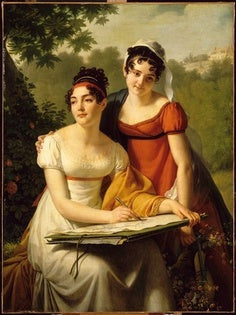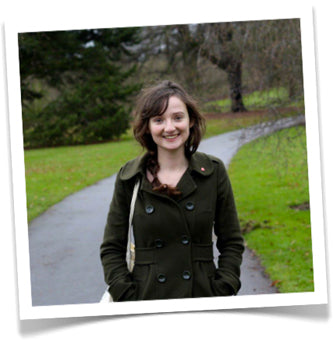 Jane Austen and Food, by Maggie Lane – A Review by Sarah Emsley:
Jane Austen and Food, by Maggie Lane – A Review by Sarah Emsley:
Is it easier or harder to write if you’re also responsible for feeding and looking after your family? “Composition seems to me impossible, with a head full of joints of mutton and doses of rhubarb,” Jane Austen wrote to her sister Cassandra in September 1816, after a period in which she managed the household at Chawton Cottage in Cassandra’s absence. Fortunately for Jane – and for us, as readers of her fiction – most of the time it was Cassandra who filled this role, freeing Jane to write. In her writing, she doesn’t mention food very often, yet Maggie Lane’s book
Jane Austen and Food shows her references to it are significant because “she uses it to define character and illustrate moral worth.”
Jane Austen and Food was first published in 1995 by The Hambledon Press, and it’s newly available as an inexpensive e-book from Endeavour Press. It isn’t a cookbook, but a discussion of food in Austen’s letters and fiction.
I’ve always loved that line from her letters about composition, and reading
Jane Austen and Food helped me understand it better. I learned that “mutton” isn’t always just mutton, and that “rhubarb” isn’t what I think of as rhubarb. Mutton, says Lane, “seems to have become the generic word for meat – or for dinner itself.” She cites the example from
Mansfield Park of Dr. Grant inviting Edmund Bertram “‘to eat his mutton with him the next day,’ without supposing, for a moment, that ‘the bill of fare’ as he calls it is actually mutton (in fact it’s turkey).” The rhubarb Austen refers to is “not the plant we think of, the stalks of which are eaten as fruit,” but “the medicinal rootstock of the species of rheum grown in China and Tibet,” imported in powdered form to be “used as a purgative by the overfed part of the population.” Lane points out that in
Northanger Abbey, Catherine Morland eventually realizes poisons are not as readily available as doses of rhubarb.
Jane Austen and Food begins with a discussion of “domestic economy” in Austen’s life and letters, outlining the historical context for subsequent analysis of meals, menus, manners, and morals in her novels. The book is full of entertaining facts, including the Austen family’s choice of turkey at Christmas (they reared their own turkeys at Steventon) while many other families ate beef; Jane Austen’s preference for the term “garden stuff,” instead of “vegetable,” a word she didn’t use in her writing until
Sanditon in 1817; the rare appearance of similes in her work (“as White as a Whipt Syllabub” and “as cool as a cream-cheese” are both in
Lesley Castle); and the importance of the hour at which a family had dinner.
Lane traces a progression from the “humble” Watsons, who dine at three, to the Dashwoods and the Woodhouses (four), to the Grants (half past four), to the Tilneys (five). Those who are fashionable or aspire to be considered fashionable dine late. At Netherfield, the hour is half past six, a full two hours after the dinner hour at Longbourn. Where characters eat is as important as when they eat and what they eat. Lane talks about why Mr. Knightley objects so strongly to eating outside – it’s thought to be “dangerous because of its tendency to break down those careful rules of behaviour which have been built up over generations to protect men and women from their baser selves.”
Who has control over food is also a key question in the novels, and Lane’s analysis is fascinating. We can learn a great deal, she says, about General Tilney and Dr. Grant from their obsessive focus on the quantity and quality of their food. While the former is “active and officious” and the latter is “idle,” Austen “shows how apparently very different styles of men can use food to manipulate and tyrannise over their immediate family.” Even characters with little or no control over the type of food or the time or place it is served find ways to exert control. Marianne Dashwood, Fanny Price, and Jane Fairfax all reject food at times of intense emotional distress. Lane writes that “the eating disorders of Marianne, Fanny and Jane may thus be said to mirror a degree of social disorder.” In contrast, Austen’s other heroines are indifferent to food. They “eat to keep themselves healthy, to be sociable, to conform. But not one of them ever anticipates or expresses pleasure in a meal, or admits to liking a particular food.” Whether a character is eating or not eating, talking about food or not talking about it, Austen’s choices are always telling.
The book concludes with not one but two interpretations of
Emma, a novel “so replete with food that it requires a whole chapter to itself,” and a helpful index of food and drink in the novels, so you can look up references to cherries, chicken, and chocolate, for example, or parsnips, partridges, and pineapples. Food and housekeeping may be considered “mundane” by some, as Lane says in her introduction, but her excellent analysis demonstrates that both are central to the moral world of Austen’s novels. Writers must decide for themselves whether the care and feeding of a family distracts them from writing, or nourishes their creative lives. But food in fiction will continue to fascinate both readers and writers. Maggie Lane’s
Jane Austen and Food entertains us with a wealth of information about historical context, and makes a compelling argument for the moral significance of food in art as well as in life.
Jane Austen and Food, by Maggie Lane
£1.99, Kindle Edition
Endeavour Press Ltd. (2013)
Digital eBook (218) pages
ASIN: B00GYJD9CC
Sarah Emsley is the author of Jane Austen’s Philosophy of the Virtues and the editor of Edith Wharton’s novel The Custom of the Country. She lives in Halifax, Nova Scotia and is currently working on a novel. She spent two years as a postdoctoral fellow at the Rothermere American Institute, University of Oxford, and later taught classes on Jane Austen in the Writing Program at Harvard University. She blogs about Austen and Wharton at www.sarahemsley.com, and to celebrate the 200th anniversary of Mansfield Park in 2014, she’s hosting a conversation about the novel on her blog, with guest posts by Juliet McMaster, Laurel Ann Nattress, Syrie James, Lynn Shepherd, Margaret C. Sullivan, Deborah Yaffe, Devoney Looser, and many other wonderful writers. Follow Sarah on Twitter (@Sarah_Emsley), visit her on Facebook (https://www.facebook.com/sarahlbemsley), and subscribe to the blog to receive updates about this exciting celebration.
This review orginally appeared on Austenprose.com and is used here with permission.
 Jane Austen and Food, by Maggie Lane – A Review by Sarah Emsley:
Jane Austen and Food, by Maggie Lane – A Review by Sarah Emsley:

